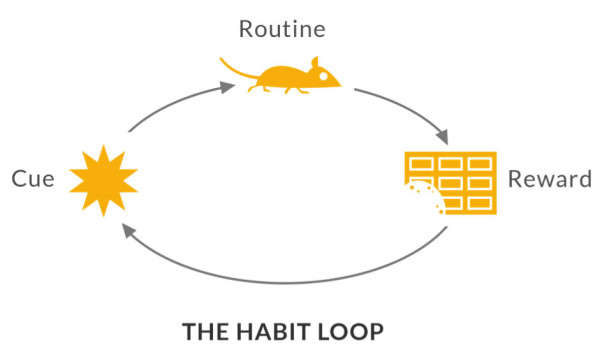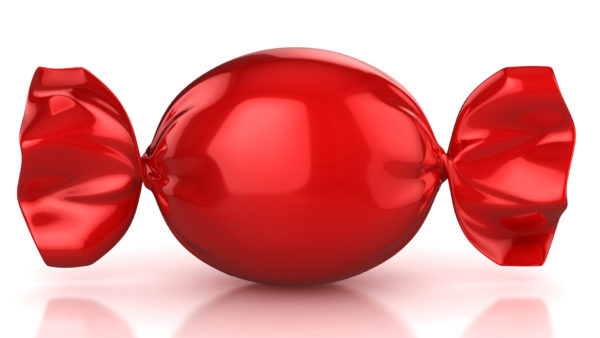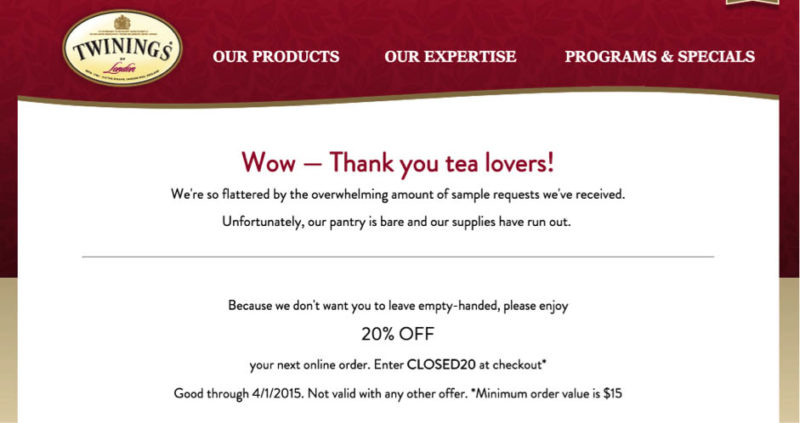6 Neuromarketing Principles That Are Always True
The field of neuromarketing may be new terrain for many marketers, but columnist Jeremy Smith helps you understand the principles behind it and how they can impact your conversion rate.
Of all the scientific fields and developments that have been adopted by marketers, neuromarketing is one of the most fascinating and rapidly developing. The field of neuromarketing was first developed in the 1990s by psychologists at Harvard University, and it has since become a significant influence on modern marketing techniques.
Although the idea is nascent, it’s shown us principles that have remained constant throughout its short life as a theory.
The following is a discussion of those principles and why you should care about them.
The Neuromarketing Purpose And Toolset
To get our minds in the field, let’s go through a brief primer of what neuromarketing is all about.
Neuromarketing is a study of consumer behavior relative to marketing practices. But what makes this different from the usual behavioral and psychological studies is the use of specialized equipment like fMRIs, EEGs and advanced biometric sensors.

Photo by Flickr user Image Editor.
These tools are used to study the consumer’s responses to various marketing stimuli — particularly sensorimotor, cognitive and affective responses.
Going a layer deeper, the goal of neuromarketing is to create a unified understanding of the principles that drive judgment and decision making in order to influence the decision-making process for positive commercial outcomes.
My definition is inspired by the motivational research and theory of George Loewenstein. See his research here.
Neuromarketing research pays close attention to the constructs of attention, reward and memory loss and retention. Better marketing tools can be designed by better understanding how the brain works and how people are likely to respond those tools.
The benefits of this kind of research should be pretty clear, but the possibilities are endless. And the methods being developed are likely not even scratching the surface of what can be accomplished.
The technology is sophisticated, but the premise is simple.
Consumers often make mistakes (even if they don’t realize it), but facts do not. Neuromarketing cuts through the obscurity and the guesswork and gets down to the biological mechanics behind consumer thinking.
It’s unlikely that you will ever conduct a neuromarketing study for your own business. Neuromarketing is not cheap. The cost of the machinery, the specialists, the test groups and the scope of the undertaking make for a pretty hefty bill. But the good news is that there are concepts coming out of the research that you can use right now to good effect.
Here are some of the perennially true principles of neuromarketing that you can use to score higher conversion rates.
1. Memes Are Powerful
Memes? Yes. Memes.
I’m not talking about Success Baby, Grumpy Cat, One Does Not Simply, or That Escalated Quickly.
The meme is a fascinating thing. Obviously, it’s commonly used to describe the kinds of picture-posts that you often see on my site and elsewhere.
The real definition is a bit more sophisticated (and true). Keep reading: You’re about to become smarter than 98.65% of the planet’s meme-gawking population.
A meme is a “unit of cultural information, similar to a gene, which is stored in the brain.” Wikipedia describes it as “an idea, behavior, or style that spreads from person to person within a culture.”
The spread aspect is what fuels the viral popularity of graphical memes. But the ideology of memes requires higher level cognition. But once you get hold of it, it can rock your world.
So what does this mean for neuromarketing?
The entire concept of neuromarketing is based on the meme. In order to get any kind of meaningful response from the customer, marketing needs to speak to that customer in a way that unleashes ideas, behaviors and styles in a cultural context.
The idea is the origin. It launches everything.
The consumer then draws a relationship between the idea — the advertised product or service — and its cultural context.
Let’s go back to the meme for a second, and think of some everyday examples:
- Melodies and songs, from commercial jingles to classical masterpieces
- Fashion, from period fashion to ultra-modern runway fashion
- Popular figures like celebrities or comic book characters
- Brands and their image, like Coke or Pepsi
These shared cultural experiences are the “memetic” (think genetic) makeup of society, and these memes have a massive influence on the choices a consumer makes. Utilizing memes in marketing is a common practice, because it allows the marketer to connect to the consumer in a highly personal way that is much more likely to lead to a conversion.
Conversion takeaway: Define your memetic principles before you hope to score more conversions.
2. The Value Of Decoys
Decoys have become a common tool in marketing. It’s known that people don’t like buying something if it’s the only one of its kind available on the market. They have the irrational worry that it is probably not any good if it’s the only one out there.
The decoy effect also describes the third choice phenomenon, in which a customer is presented with a third and lesser-value choice to enhance the desirability of the high-priced option. This is a powerful conversion principle that I’ve discussed in-depth in another article.
Basically, decoys are inferior products that are presented at higher prices to make the real money-maker look more appealing to the customer. Manufacturers lose money on the decoy, but that money is made back by the sales that are generated for the real target.
The decoy is an excellent example of environmental design in marketing. In retail, this means the organization of products on the sales floor to contrast the decoy with the target.
Conversion takeaway: Use decoy pricing to persuade the customer of the rationality of the purchase.
3. Reward Escalation And Variability
Everybody likes rewards, and everybody likes novelty. Neuromarketing affirms the power of these models upon human behavior.
Blogger and game designer Zane Claes has described the power of this principle at play in video games. Video games have a core loop, a task that is repeated over and over again in a progression of skill, difficulty and reward escalation. This loop mimics the habit loop. That’s why video games are so habit-forming.
The loop can be exploited for marketing and conversion optimization.
In the video game’s core loop, there are two major neurochemical reactions at work. Adrenaline is released by the act of overcoming the challenge, and dopamine is released in the anticipation and receiving of the reward.
The challenges and rewards start off small, and throughout the game they build incrementally. Games like Call of Duty and Angry Birds are wildly successful in part because they utilize neuromarketing principles to build habits.
Therein is the lesson for marketing. Customers don’t advocate for a brand after only one OK experience. Brand advocates are made by creating an attachment between a customer and a product or service. And an attachment is best developed through the building of a habit loop that you can make a part of your customer’s routine.
Conversion takeaway: Once you have the conversion, you can get a lot more through properly engineered interactions with the customer. In my discussion of the psychology of habit, I’ve explained some of the principles that will turn your visitors into addicts.
4. Justify The Conversion Through Anchoring
Anchors hold. For the customer, the anchor is the point of reference against which all other products are compared. It is a powerful conversion optimization technique.
People have a tendency to bias their decisions heavily based on the first piece of information they’re given, and for a product or service, this first piece of information is the anchor by which all other products are judged.
Anchoring bias can be utilized to help a visitor justify their conversion.
Here’s how Wikipedia describes anchoring:
Once an anchor is set, other judgments are made by adjusting away from that anchor, and there is a bias toward interpreting other information around the anchor. For example, the initial price offered for a used car sets the standard for the rest of the negotiations, so that prices lower than the initial price seem more reasonable even if they are still higher than what the car is really worth.
This is a practice that has been used in bartering since time immemorial.
Set the price high and go down from there.
Conversion takeaway: In the stages setting up a call to action, give the prospects an anchor that they can use to justify answering your CTA. You should also recall the importance of the decoy in principle number 2. All of these principles relate to and complement one another, and they can be combined for a powerful cumulative effect.
5. Make Them Feel Like They Owe You Something
Think of tipping in restaurants. A 2002 Cornell University study wanted to see what happened when servers at a restaurant put candy in with a customer’s bill. Through all the different variations in candy size (or complete lack of candy), the study found that the gift increased the size of the tip.
The phenomenon at work was reciprocity, a principle of human behavior that has been the subject of intense study in the anthropological sciences.
People are compelled to repay debts, both by social pressures and internal emotions like pride, altruism and guilt. Entire economies used to run on the concept of reciprocity, and some still do, particularly in hunter-gatherer societies and small chiefdoms.
Twinings Tea, for example, used to ship free tea samples to anybody who was interested, with no obligation whatsoever beyond filling out the form. It was so awesome that they had to close it down.
Free samples, exclusive information, anything will work. People don’t like to feel like they are being manipulated, so tread carefully.
If properly used, the idea of reciprocity can give you significant increases in conversion, so put it to use and see what works for your particular product or service.
Conversion takeaway: Try giving your visitors something of value, with no expectation of anything in return.
6. Hurt Them, And Then Offer Them The Cure
That sounds more sinister than it really is. The principle is built on a simple idea that when customers are trying to obtain something, they are also trying to avoid something — something painful.
Hurt-and-rescue is one of the more direct methods of emotion-based selling. The method goes like this: The marketer makes the customer aware of a problem he or she has. The problem can be real or imagined, like poor posture or “bad” taste in shrubberies.
The marketer then presents the solution to the problem. This is an excellent way to get conversions, and it forms the framework for a lot of the copy on call-to-action pages.
An important point for hurt-and-rescue is that it is an excellent way to show that you have empathy for the customer. Use the method to build a relationship around a shared experience.
Conversion takeaway: Build emotional connections and tell a story. Design the site around building this rapport, and you’ll be much more effective at persuading customers that you’re the best solution they have for their problem.
Conclusion
Neuromarketing is an incredibly powerful tool.
For a field of study that’s only 25 years old, it has made a deep impact on the methods used by marketers in every sector and industry. You’ve probably noticed that a lot of the techniques and tools that you’re already familiar with take advantage of the principles outlined above.
Conversion optimization makes strong use of the principles of neuromarketing, and the nature of the beast means that a lot of these techniques and principles will complement each other incredibly well.
Experiment with the principles, and see what you can find. There’s always something you can do to go just a little further.
Opinions expressed in this article are those of the guest author and not necessarily MarTech. Staff authors are listed here.
Related stories






